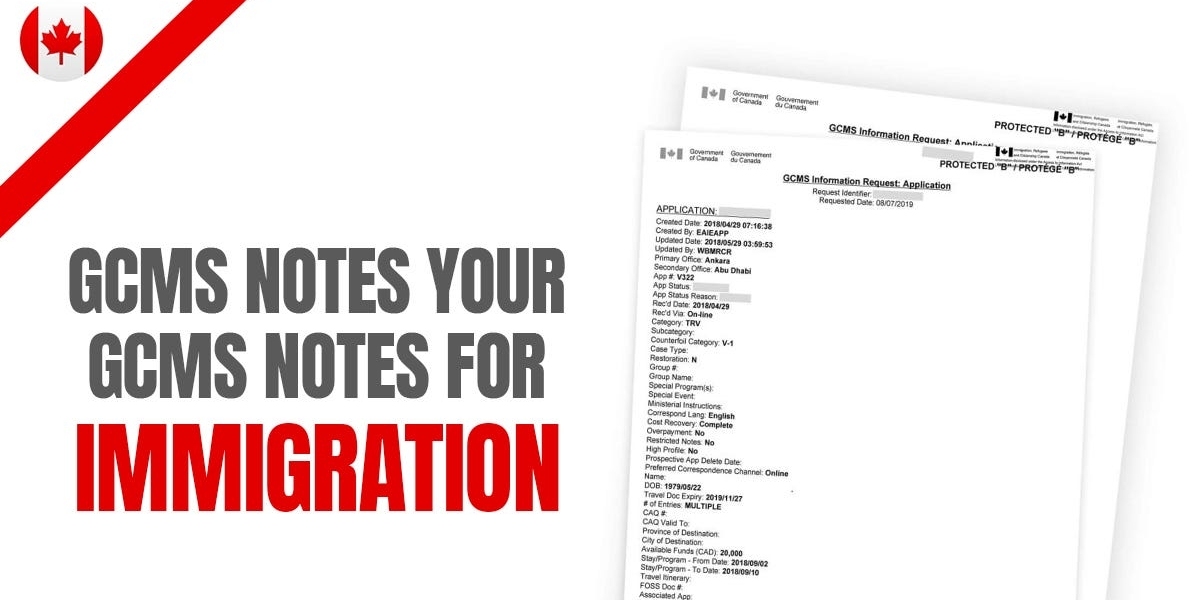Introduction to GCMS Notes
Navigating the Canadian immigration system can be a daunting task, especially when it comes to understanding the intricacies of the Global Case Management System (GCMS) notes. These notes hold valuable information about your immigration application, providing insights into its status, assessments, and decision-making processes. In this comprehensive guide for 2024, we will delve into the world of GCMS notes, offering you a complete understanding of what they are, why they matter, how to obtain them, and how to interpret their contents effectively.
What Are GCMS Notes?
GCMS notes are detailed records maintained by Immigration, Refugees, and Citizenship Canada (IRCC) regarding an individual's immigration or visa application. These notes contain a wealth of information, including application details, correspondence between IRCC officers and applicants, assessments, and any additional documents submitted throughout the application process. Essentially, GCMS notes provide a behind-the-scenes look at how your application is being processed and evaluated by immigration authorities.
Why Are GCMS Notes Important?
Accessing GCMS notes can be immensely beneficial for applicants for several reasons:
- Insight into Application Status: GCMS notes offer real-time updates on the status of your application, allowing you to track its progress and anticipate any potential delays or issues.
- Clarity on Assessments: By reviewing GCMS notes, applicants can gain a deeper understanding of how their application is being assessed, including any concerns or points of interest identified by IRCC officers.
- Preparation for Future Applications: Examining GCMS notes from previous applications can help applicants identify areas for improvement and better prepare for future immigration endeavors.
- Verification of Information: GCMS notes allow applicants to verify the accuracy of information recorded by IRCC and address any discrepancies that may arise during the application process.
How to Obtain GCMS Notes
Requesting GCMS notes involves a systematic process, which can be summarized as follows:
- Submit an Access to Information (ATI) Request: Applicants must submit an Access to Information (ATI) request to IRCC, either through the IRCC website or the Government of Canada's Access to Information and Privacy (ATIP) Online Request Service.
- Payment of Processing Fee: A processing fee is typically associated with GCMS notes requests, the amount of which may vary depending on factors such as the type of application and the volume of information requested. Payment can be made online using a credit card.
- Await Processing: Following the submission of the request and payment, applicants must wait for IRCC to process their request. The processing time may vary but generally ranges from several weeks to a few months.
- Receipt of GCMS Notes: Once processed, applicants will receive their GCMS notes electronically via email. These notes will typically be in PDF format and may consist of multiple documents, depending on the complexity of the application.
Interpreting GCMS Notes
Interpreting GCMS notes requires a careful analysis and an understanding of immigration terminology and procedures. Here are some key considerations when reviewing GCMS notes:
- Organizational Structure: GCMS notes are typically organized chronologically, with the most recent documents appearing first. It's essential to review these documents in sequence to understand the progression of the application.
- Deciphering Codes and Abbreviations: GCMS notes may contain codes, abbreviations, and technical terminology used by IRCC officers. Online resources or professional assistance may be necessary to decode these elements and understand their significance.
- Identification of Decision Points: Pay attention to sections of the GCMS notes where IRCC officers make decisions or recommendations regarding the application. Understanding the reasoning behind these decisions can provide valuable insights into the assessment process.
- Flagging Concerns: If any discrepancies or concerns arise during the review of GCMS notes, it's essential to make a note of them for further investigation or clarification.
Tips for Maximizing the Benefits of GCMS Notes
To leverage the full potential of GCMS notes, consider the following tips:
- Thorough Review: Take the time to review GCMS notes meticulously, noting any relevant information or discrepancies.
- Seek Professional Guidance: If you encounter any challenges or require clarification on specific points within the GCMS notes, consider seeking assistance from immigration consultants or legal professionals well-versed in Canadian immigration law.
- Strategic Use of Information: Utilize the insights gleaned from GCMS notes to inform your immigration strategy and enhance your chances of success in future applications.
- Maintain Documentation: Retain a copy of your GCMS notes for your records, as they may prove valuable for reference in future applications or legal proceedings.
Conclusion
In conclusion, GCMS notes serve as a vital resource for individuals navigating the Canadian immigration system, offering valuable insights into the status and assessment of their applications. By understanding how to request and interpret GCMS notes effectively, applicants can gain a clearer understanding of their immigration journey and make informed decisions moving forward. Whether you're pursuing permanent residency, citizenship, a work permit, or any other immigration status in Canada, GCMS notes can be a valuable tool to help you achieve your immigration goals.








